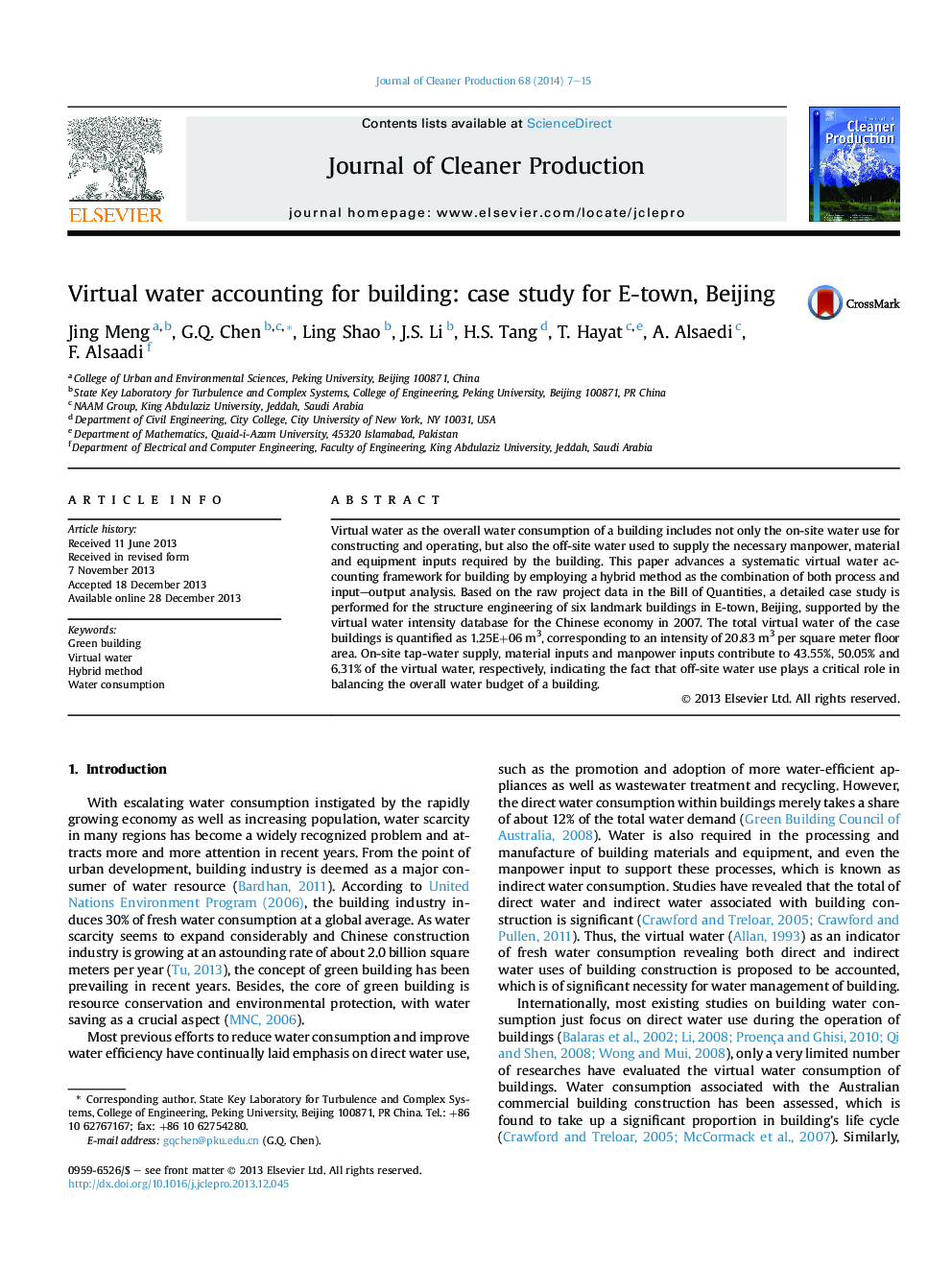| Article ID | Journal | Published Year | Pages | File Type |
|---|---|---|---|---|
| 8106624 | Journal of Cleaner Production | 2014 | 9 Pages |
Abstract
Virtual water as the overall water consumption of a building includes not only the on-site water use for constructing and operating, but also the off-site water used to supply the necessary manpower, material and equipment inputs required by the building. This paper advances a systematic virtual water accounting framework for building by employing a hybrid method as the combination of both process and input-output analysis. Based on the raw project data in the Bill of Quantities, a detailed case study is performed for the structure engineering of six landmark buildings in E-town, Beijing, supported by the virtual water intensity database for the Chinese economy in 2007. The total virtual water of the case buildings is quantified as 1.25E+06Â m3, corresponding to an intensity of 20.83Â m3 per square meter floor area. On-site tap-water supply, material inputs and manpower inputs contribute to 43.55%, 50.05% and 6.31% of the virtual water, respectively, indicating the fact that off-site water use plays a critical role in balancing the overall water budget of a building.
Related Topics
Physical Sciences and Engineering
Energy
Renewable Energy, Sustainability and the Environment
Authors
Jing Meng, G.Q. Chen, Ling Shao, J.S. Li, H.S. Tang, T. Hayat, A. Alsaedi, F. Alsaadi,
